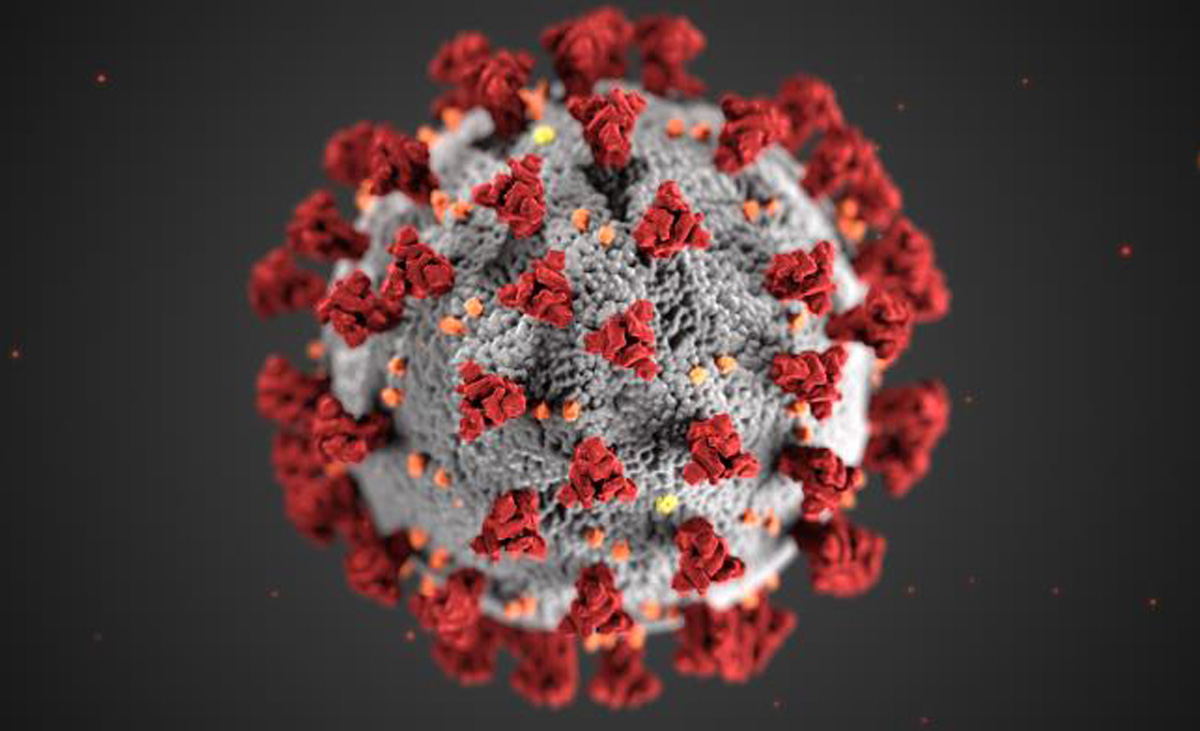
Researchers Engineer Drug-Like Compounds that Disable SARS-CoV-2's Replication Engine
October 7, 2020| |
Researchers at Scripps Research led by Dr. Matthew Disney have created drug-like compounds that, in human cell studies, bind and destroy the pandemic coronavirus' so-called "frameshifting element" to stop the virus from replicating. The frameshifter is a clutch-like device that the virus needs to generate new copies of itself after infecting cells.
In collaboration with Iowa State University Assistant Professor Walter Moss, the team analyzed and predicted the structure of molecules encoded by the viral genome, in search of its vulnerabilities. They focused on the virus' frameshifting element, in part, because it features a stable hairpin-shaped segment, one that acts like a joystick to control protein-building. They predicted that binding the joystick with a drug-like compound should disable its ability to control frameshifting. The virus needs all of its proteins to make complete copies, so disturbing the shifter and distorting even one of the proteins should, in theory, stop the virus altogether.
From Dr. Disney's database of RNA-binding chemical entities, they found 26 candidate compounds. Further testing with different variants of the frameshifting structure revealed three candidates that bound them all well, Disney says. Tests done in human cells with COVID-19's frameshifting element revealed one, C5, had the most pronounced effect, in a dose-dependent manner, and did not bind unintended RNA. The team went even further and engineering the C5 compound to carry an RNA editing signal that causes the cell to specifically destroy the viral RNA. With the addition of the RNA editor, "these compounds are designed to basically remove the virus," Disney says.
For more details, read the article in Scripps Research.
| |
You might also like:
- Most Comprehensive Map of SARS-CoV-2 Genomic Structures Now Published
- Researchers Discover Vulnerability in SARS-CoV-2
- MassBiologics Identifies Antibodies that may Protect Against COVID-19
Biotech Updates is a weekly newsletter of ISAAA, a not-for-profit organization. It is distributed for free to over 22,000 subscribers worldwide to inform them about the key developments in biosciences, especially in biotechnology. Your support will help us in our mission to feed the world with knowledge. You can help by donating as little as $10.
-
See more articles:
-
News from Around the World
- Researchers Sequence Genomes of 600 Green Millet Plants, Find Gene for Dispersal
- Paraguay Simplifies Procedures in the Approval of GE Crops
- Transgenic Hybrid Corn Harvest Boosts Cuba's Confidence in Corn Yield
- FSANZ Seeks Public Comment for GM Corn Approval
- Farmer Survey Reveals Significant Economic, Environmental Benefits From GM Corn in Vietnam
- Research Explains Farmer Reluctance to Adopt New Technologies
- Gene for Resistance to Devastating Tomato Virus Now Identified
-
Research Highlights
- Meta-analysis Detect Candidate Rice Genes Involved in Salt Tolerance
-
Plant
- DNA-Free Screening System for Gene Editing in Hot and Sweet Bell Peppers
- Scientists Explore on Genetic Transformation of Mosquitoes
- Researchers Develop Pale Purplish-Pink Petunia via CRISPR-Cas9
-
Health
- Researchers Engineer Drug-Like Compounds that Disable SARS-CoV-2's Replication Engine
-
Read the latest: - Biotech Updates (January 14, 2026)
- Gene Editing Supplement (December 17, 2025)
- Gene Drive Supplement (February 22, 2023)
-
Subscribe to BU: - Share
- Tweet

